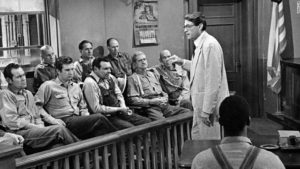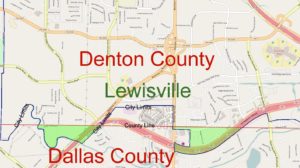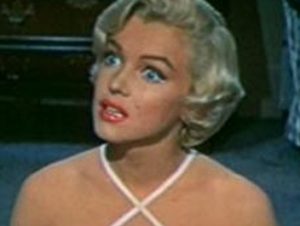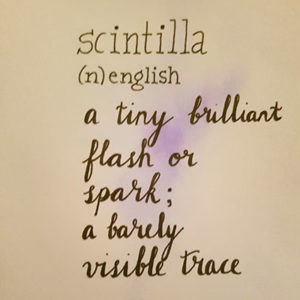 The Fullers won a judgment against the Balthazars for a fraudulent transfer, arising from an earlier state court proceeding. The Fifth Court eliminated two elements of their judgment. First, it limited their recovery to “the value of the assets the Fullers proved were fraudulently transferred,” rather than the entire amount of the previous state-court judgment. Second, it did not allow recovery for a discovery sanction levied in the original case, as the Balthazars were not parties to it, and the sanction did not come within the statutory measure of “the value of the asset transferred . . . or the amount necessary to satisfy the creditor’s claim, whichever is less.” Balthazar & Sons v. Fuller, No. 05-17-00956-CV (June 25, 2018) (mem. op.)
The Fullers won a judgment against the Balthazars for a fraudulent transfer, arising from an earlier state court proceeding. The Fifth Court eliminated two elements of their judgment. First, it limited their recovery to “the value of the assets the Fullers proved were fraudulently transferred,” rather than the entire amount of the previous state-court judgment. Second, it did not allow recovery for a discovery sanction levied in the original case, as the Balthazars were not parties to it, and the sanction did not come within the statutory measure of “the value of the asset transferred . . . or the amount necessary to satisfy the creditor’s claim, whichever is less.” Balthazar & Sons v. Fuller, No. 05-17-00956-CV (June 25, 2018) (mem. op.)
Monthly Archives: June 2018
 In a dispute about the propriety of an expert’s testimony in a medical malpractice case, the Fifth Court reminded that “the erroneous admission of evidence is harmless if it is merely cumulative,” found that “[the expert’s] testimony was not the only basis on which the jury could find that Rudman was not negligent,” and described three other witnesses who spoke to the relevant issue. As to the disputed opinion, then, ” its admission was harmless.” McPherson v. Rudman, No. 05-16-00719-CV (June 21, 2018) (mem. op.)
In a dispute about the propriety of an expert’s testimony in a medical malpractice case, the Fifth Court reminded that “the erroneous admission of evidence is harmless if it is merely cumulative,” found that “[the expert’s] testimony was not the only basis on which the jury could find that Rudman was not negligent,” and described three other witnesses who spoke to the relevant issue. As to the disputed opinion, then, ” its admission was harmless.” McPherson v. Rudman, No. 05-16-00719-CV (June 21, 2018) (mem. op.)
 Skyline Commercial v. ISC Acquisition addressed several aspects of the interplay between an express contract and the doctrine of quantum meruit, including:
Skyline Commercial v. ISC Acquisition addressed several aspects of the interplay between an express contract and the doctrine of quantum meruit, including:
- A statement about the scope of a contract, made in response to a motion to transfer venue, did not conclusive resolve the viability of the quantum meruit claim because a party may not judicially admit a question of law;
- The trial court correctly used the applicable Pattern Jury Charge about quantum meruit (reminding, “a trial court should not embellish well-settled pattern jury charges with addendum”); and
- The jury properly weighed conflicting testimony about whether the defendant knew of the relevant orders – and the plaintiff’s expectation of payment for them.
No. 05-17-00028-CV (June 22, 2018) (mem. op.)
 Wal-Mart v. Bishop affirmed judgment on a jury verdict against Wal-Mart arising from an in-store injury; among other issues, the Fifth Court addressed several challenges to closing argument. The discussion is practical and of broad interest to trial lawyers. The specific issues, as stated by Wal-Mart, were whether the trial court erred when it allowed plaintiff’s trial counsel “to make improper jury arguments that discussed theories of liability not submitted to the jury; characterized Walmart in a manner intended to inflame the passion of the jury; misled the jury as to the reason Walmart did not present evidence on the reasonableness and necessity of Bishop’s past medical expenses; and characterized conflicting sworn statements by Gajurel as constituting ‘perjury.'”
Wal-Mart v. Bishop affirmed judgment on a jury verdict against Wal-Mart arising from an in-store injury; among other issues, the Fifth Court addressed several challenges to closing argument. The discussion is practical and of broad interest to trial lawyers. The specific issues, as stated by Wal-Mart, were whether the trial court erred when it allowed plaintiff’s trial counsel “to make improper jury arguments that discussed theories of liability not submitted to the jury; characterized Walmart in a manner intended to inflame the passion of the jury; misled the jury as to the reason Walmart did not present evidence on the reasonableness and necessity of Bishop’s past medical expenses; and characterized conflicting sworn statements by Gajurel as constituting ‘perjury.'”
 The third prong of the Craddock test for setting aside a default judgment – that the defendant “file the motion at a time when granting it will occasion no delay or otherwise work an injury to the plaintiff” – is commonly cited when awarding attorneys’ fees to the plaintiff. The plaintiff in In re: CGI Construction went a step further and also obtained a requirement that the defendant waive its contractual right to arbitrate. The Fifth Court conditionally granted mandamus relief, finding as a matter of law (in light of the strong policy favoring arbitration) that “the trial court may not condition the granting of a new trial and motion to set aside default judgment on waiver of contractual arbitration rights,” and that the plaintiff did not otherwise establish evidence of injury (a lost witness, etc.) if arbitration proceeded. No. 05-18-00320-CV (June 18, 2018) (mem. op.)
The third prong of the Craddock test for setting aside a default judgment – that the defendant “file the motion at a time when granting it will occasion no delay or otherwise work an injury to the plaintiff” – is commonly cited when awarding attorneys’ fees to the plaintiff. The plaintiff in In re: CGI Construction went a step further and also obtained a requirement that the defendant waive its contractual right to arbitrate. The Fifth Court conditionally granted mandamus relief, finding as a matter of law (in light of the strong policy favoring arbitration) that “the trial court may not condition the granting of a new trial and motion to set aside default judgment on waiver of contractual arbitration rights,” and that the plaintiff did not otherwise establish evidence of injury (a lost witness, etc.) if arbitration proceeded. No. 05-18-00320-CV (June 18, 2018) (mem. op.)
 The Fifth Court conditionally granted mandamus relief as to the denial of a forum non conveniens motion in In re Ace American, a dispute about the denial of a workers’ compensation claim made by an Arizona resident against an Arizona employer. The claim was reviewed by a Dallas-based adjuster. The Court found that all relevant factors favored Arizona, noting in particular that:
The Fifth Court conditionally granted mandamus relief as to the denial of a forum non conveniens motion in In re Ace American, a dispute about the denial of a workers’ compensation claim made by an Arizona resident against an Arizona employer. The claim was reviewed by a Dallas-based adjuster. The Court found that all relevant factors favored Arizona, noting in particular that:
- No authority appeared to support the claim that “the importance of the power to compel witnesses to appear at trial is overemphasized . . . live testimony of physicians, for example, is rare . . . [and] use of video depositions of witnesses obviates the need for witnesses to attend trial,” and
- While part of the alleged tort may have occurred in Texas, the weight of authority did not foreclose that other parts of the alleged tort could have occurred elsewhere – in other words, that there was no singular “place of the alleged wrong” for purposes of the “local interest / localized controversies ” factor.
No. 05-17-01032-CV (June 15, 2018) (mem. op.)
 I am speaking this week at the 28th Annual Conference on State and Federal Appeals sponsored by the University of Texas School of Law; my topic is a “Fifth Circuit Update” and this is my PowerPoint.
I am speaking this week at the 28th Annual Conference on State and Federal Appeals sponsored by the University of Texas School of Law; my topic is a “Fifth Circuit Update” and this is my PowerPoint.
 X Extreme Construction won a $200,000 judgment in Dallas district court against three defendants. One of the defendants then sold his house, after which X Extreme obtained a receivership over, inter alia, the sales proceeds. After more skirmishing, the Dallas court issued a writ of execution to sell the house; the purchasers filed suit in Denton County to enjoin the sale; and the Dallas court ordered the purchasers to dismiss the Denton case. The resulting standoff led to a petition for writ of mandamus, which the Dallas Court of Appeals conditionally granted in In re Marzwanian, No. 05-18-00485-CV (June 12, 2018) (mem. op.) The Court concluded that the Dallas court lacked jurisdiction over the purchasers, who were not parties to the underlying litigation, and that no statute or common law principle required litigation about the purchasers’ title to occur in the court that appointed the receiver.
X Extreme Construction won a $200,000 judgment in Dallas district court against three defendants. One of the defendants then sold his house, after which X Extreme obtained a receivership over, inter alia, the sales proceeds. After more skirmishing, the Dallas court issued a writ of execution to sell the house; the purchasers filed suit in Denton County to enjoin the sale; and the Dallas court ordered the purchasers to dismiss the Denton case. The resulting standoff led to a petition for writ of mandamus, which the Dallas Court of Appeals conditionally granted in In re Marzwanian, No. 05-18-00485-CV (June 12, 2018) (mem. op.) The Court concluded that the Dallas court lacked jurisdiction over the purchasers, who were not parties to the underlying litigation, and that no statute or common law principle required litigation about the purchasers’ title to occur in the court that appointed the receiver.
 A good summary of a basic principle about a jury’s damages award appeared in David Hoppenstein Family, Ltd. v. Zargaran: “The fact-finder has discretion to award damages within the range of evidence presented at trial. See Mays v. Pierce, 203 S.W.3d 564, 578 n. 20 (Tex. App.—Houston [14th Dist.] 2006, pet. denied) (court of appeals described how trial court could have arrived at damage award, but stated appellate court need not recreate the fact-finder’s calculations in order to determine whether amount of actual damages awarded was within range of evidence presented at trial); see also Howell Crude Oil Co. v. Donna Refinery Partners, Ltd., 928 S.W.2d 100, 108 (Tex. App.—Houston [14th Dist.] 1996, writ denied) (concluding damage award was not outside range of evidence presented at trial, even where it was not clear how trier of fact arrived at figure).” No. 05-16-01376-CV (June 8, 2018
A good summary of a basic principle about a jury’s damages award appeared in David Hoppenstein Family, Ltd. v. Zargaran: “The fact-finder has discretion to award damages within the range of evidence presented at trial. See Mays v. Pierce, 203 S.W.3d 564, 578 n. 20 (Tex. App.—Houston [14th Dist.] 2006, pet. denied) (court of appeals described how trial court could have arrived at damage award, but stated appellate court need not recreate the fact-finder’s calculations in order to determine whether amount of actual damages awarded was within range of evidence presented at trial); see also Howell Crude Oil Co. v. Donna Refinery Partners, Ltd., 928 S.W.2d 100, 108 (Tex. App.—Houston [14th Dist.] 1996, writ denied) (concluding damage award was not outside range of evidence presented at trial, even where it was not clear how trier of fact arrived at figure).” No. 05-16-01376-CV (June 8, 2018
 The appellant, Hope Hill Investments, asserted laches against the Richardson school district’s tax-collection suit, claiming an unfair seven-year delay in filing the case. The Fifth Court rejected that defense. As to the controlling law, it reminded: “‘[I]n the absence of some element of estoppel or such extraordinary circumstances as would render inequitable the enforcement of petitioners’ right after a delay, laches will not bar a suit short of the period set forth in the limitation statute.’” (emphasis added, citations omitted). Factually: “Hope Hill claims that it made a diligent effort to locate Seeley, the original property owner, but he could not be found due to RISD’s delay in filing suit. Had the District named Seeley as a defendant, Hope Hill contends that it could have asserted a cross-claim against him. However, Hope Hill’s lost ability to seek contribution or indemnity from other parties due to RISD’s delay does not, without more, raise a claim of “estoppel” or “extraordinary circumstances.” Hope Hill Investments v. Richardson ISD, No. 05-16-01519-CV (June 5, 2018) (mem. op.)
The appellant, Hope Hill Investments, asserted laches against the Richardson school district’s tax-collection suit, claiming an unfair seven-year delay in filing the case. The Fifth Court rejected that defense. As to the controlling law, it reminded: “‘[I]n the absence of some element of estoppel or such extraordinary circumstances as would render inequitable the enforcement of petitioners’ right after a delay, laches will not bar a suit short of the period set forth in the limitation statute.’” (emphasis added, citations omitted). Factually: “Hope Hill claims that it made a diligent effort to locate Seeley, the original property owner, but he could not be found due to RISD’s delay in filing suit. Had the District named Seeley as a defendant, Hope Hill contends that it could have asserted a cross-claim against him. However, Hope Hill’s lost ability to seek contribution or indemnity from other parties due to RISD’s delay does not, without more, raise a claim of “estoppel” or “extraordinary circumstances.” Hope Hill Investments v. Richardson ISD, No. 05-16-01519-CV (June 5, 2018) (mem. op.)
A clean illustration of the concept of “less than a scintilla of evidence” appears in Gaytan v. DART. Gaytan won a jury verdict for $45,000 in  future medical expenses resulting from an incident on a DART bus. He argued that “the jury’s award of $45,000 in future medical expenses could be supported by multiplying an annual cost of $7,000 for two emergency room visits for six and one half years” Unfortunately for Gaytan: “There was no evidence, however, to show a reasonable probability Gaytan would visit the emergency room in the future, let alone twice yearly, in connection with the injuries he sustained in 2012. The only emergency room visits he made after 2012 were as a result of other accidents.” No. 05-17-00116-CV (June 1, 2018) (mem. op.)
future medical expenses resulting from an incident on a DART bus. He argued that “the jury’s award of $45,000 in future medical expenses could be supported by multiplying an annual cost of $7,000 for two emergency room visits for six and one half years” Unfortunately for Gaytan: “There was no evidence, however, to show a reasonable probability Gaytan would visit the emergency room in the future, let alone twice yearly, in connection with the injuries he sustained in 2012. The only emergency room visits he made after 2012 were as a result of other accidents.” No. 05-17-00116-CV (June 1, 2018) (mem. op.)